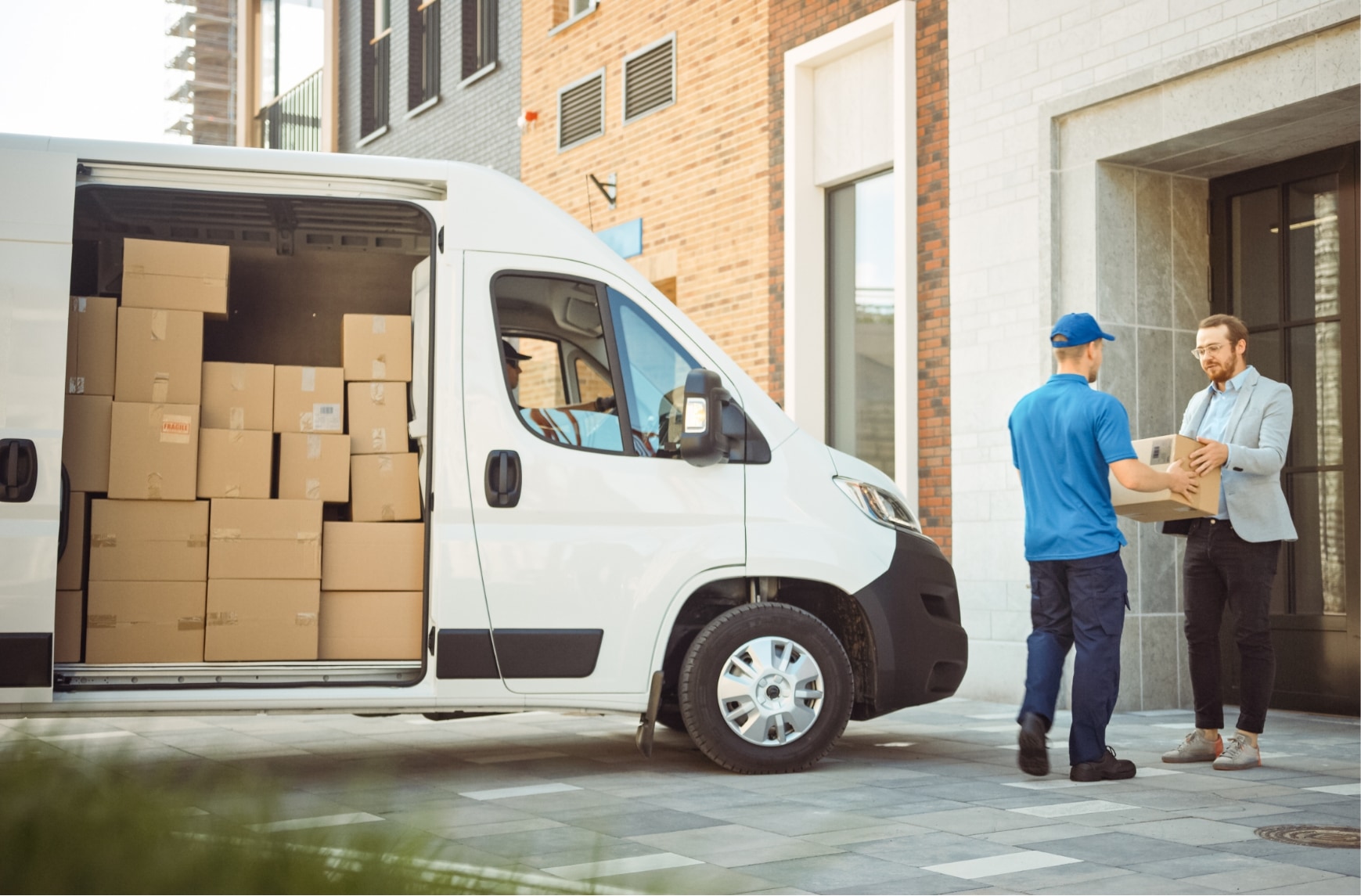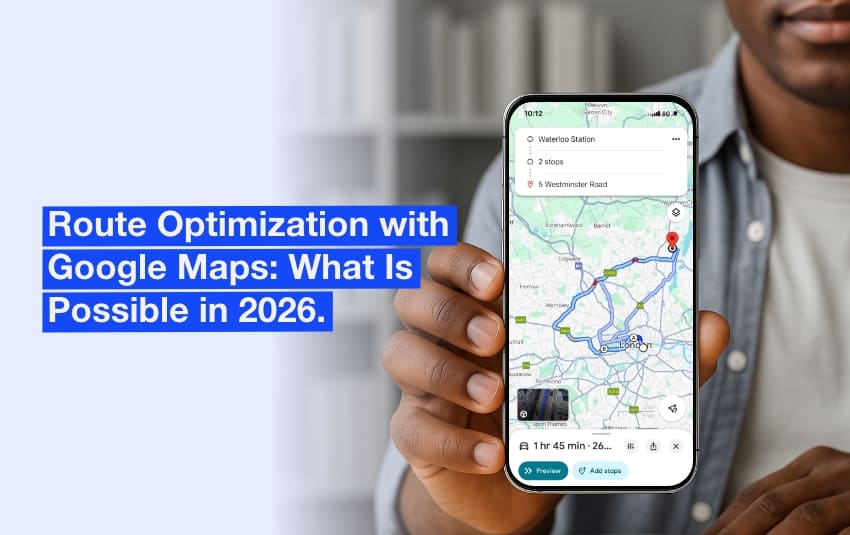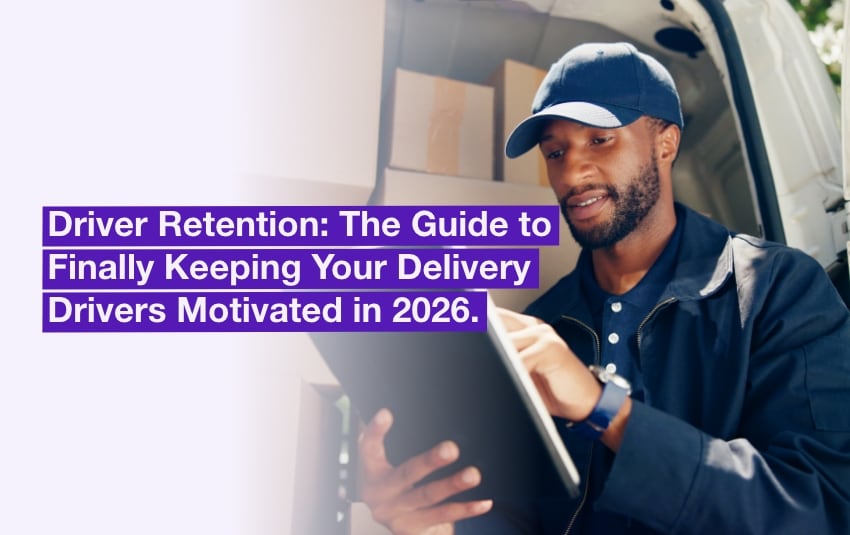8 key trends in the transport and logistics industries

After the pallets of masks delivered by airlift in 2020, the traffic jams in the Suez Canal have left their mark on the news in 2021. Logistics, which has been downgraded for a long time compared to other areas such as finance or marketing, has definitely demonstrated its strategic importance.
When it comes to assessments and forecasts, these 8 major trends are going to guide transport and logistics professionals in their decision-making.
Table of contents
- The difficulty of recruiting and retaining drivers
- Ever shorter delivery times
- Increased use of supply chain optimisation software
- The development of automated solutions and autonomous vehicles
- Ultra-flexible return policies
- More eco-friendly delivery solutions
- The rise of urban logistics and alternative delivery locations
- The relocation of certain parts of the logistics chain
The logistics industry is undergoing an in-depth transformation. There are a number of factors driving strategic decisions by transport professionals. These include driver loyalty, shorter delivery times, environmentally-friendly deliveries and the use of supply chain optimisation software.
The difficulty of recruiting and retaining drivers
No driver, no delivery ; no delivery, no turnover. Across Europe, many operations managers have made this bitter observation, forced to turn down contracts or postpone deadlines. Far from being limited to the UK, where Boris Johnson had to rush out visas by the thousands, the problem is now felt throughout Europe.
In France, for example, the Observatoire Prospectif du Transport et de la Logistique considers 60% of driver recruitment to be difficult. The percentage reaches 73% for heavy goods vehicle driver positions.
In upcoming years, logistics managers will continue to increase the number of initiatives to retain existing drivers and attract new ones:
- Alternative recruitment campaigns: by simulation, in the street, by co-option…
- Improvement of salary conditions.
- Use of route management applications to facilitate the work of drivers and reduce their stress levels, etc.
Ever shorter delivery times
Whether you like it or not, the 24-hour delivery included in the Amazon Prime subscription has profoundly changed customer expectations.
According to a study carried out by Havas for Paris Retail Week, almost 9 out of 10 consumers want faster delivery from e-tailers. The speed of delivery, which has become as important criterion of choice as promotions and low prices, will even “structure the commerce of tomorrow” according to this study.
In response, transport professionals are expected to meet these new requirements, but are unable to pass on all the additional costs associated with this ultra-rapidity. In order to successfully meet these increasingly tight deadlines, the trend is therefore more than ever towards optimising each part of the supply chain:
- Flexible management of storage and warehousing areas.
- Customised packaging to improve truck filling.
- Use of freight exchanges to reduce empty transport due to these ultra-short contractual deadlines.
- Subcontracting too often, etc.

The consumers want faster delivery.
Increased use of supply chain optimisation software
To achieve tangible results in transport optimisation, software solutions have become essential. For many supply chain actors, especially those involved in the last mile, it is now impossible to do without it. But they are far from being the only ones!
In a recent study, the investment bank GP Bullhound announced that the supply chain management software market will reach 20 billion dollars worldwide by 2022. Here are the examples of supply chain optimisation software :
- Software for managing and monitoring stocks in warehouses (Warehouse Management Systems).
- Tools for monitoring mechanised logistics equipment such as robots or conveyors (WCS or Warehouse Control Systems).
- TMS or Transport Management Systems, including route optimization systems such as AntsRoute, etc.

The AntsRoute logistics route optimisation software.
The development of automated solutions and autonomous vehicles
In addition to the software solutions themselves, automation, robotics and artificial intelligence are becoming increasingly important at every stage of the supply chain:
- Stacker cranes for pallets, able to move goods in 3 dimensions without human help.
- Picking stations to bring products to the operator, or even fully automated warehouses.
- Augmented reality glasses to guide order pickers.
- Optical recognition devices for sorting parcel flows.
- Experimentation with alternative devices to replace traditional delivery systems: drones, autonomous vehicles and even… parachute drops!
At the same time, companies are organizing themselves to recruit the rare profiles able to efficiently manage these new logistics tools – and the data flows that go with them. The positions of logistics data analyst (dataminer) or sales and operation planner should soon be making their appearance in the organisation charts.
Ultra-flexible return policies
One of the trends that will drive the supply chain of the future is ultra-flexible return policies for all online operations, according to the study commissioned by Havas:
- Try before you buy.
- Supply of flexible packaging or QR code systems to streamline the workflow.
- Free returns for the consumer, etc.
It is again pure players such as Amazon or Zalando that have initiated these very generous return policies, some of them even lax. These have become over time a powerful competitive advantage. But with return rates exceeding 10% for almost all e-tailers, reverse logistics is becoming a market in its own right!
More eco-friendly delivery solutions
Greenhouse gases linked to transport account for more than a quarter of polluting emissions in Europe. But, as we have already mentioned, customers are increasingly keen on ultra-fast home deliveries… and therefore very resource-consuming!
Faced with this suffocating paradox for the planet, pressure on transport companies is increasing from all sides:
- Repeated increases in the cost of fuel, raw materials and taxes.
- Regulatory constraints from states or cities, such as the Low Emission Zones in France.
- Growing environmental concerns among consumers, etc.
Offering more environmentally friendly transport routes is precisely the objective of “green logistics”. However, contrary to popular belief, green logistics is not limited to the use of vehicles that are popular with the general public, such as bicycles or trucks powered by renewable energy. The optimisation of routes and vehicle filling thanks to artificial intelligence offers possibilities for reducing the carbon footprint, which may be less spectacular, but are just as effective!

There are more and more eco-friendly delivery solutions.
The rise of urban logistics and alternative delivery locations
In order to quickly cover this famous last mile without increasing costs or carbon footprint, urban logistics is another solution that is becoming increasingly popular. This logistics element, which is essential to meet the explosion in demand from consumers and e-retailers, can take various forms:
- Establishment of micro-hubs, i.e. storage or distribution centres, on the outskirts or even within large conurbations.
- Reconverting abandoned sites into logistics spaces: underused car parks, industrial wastelands, former gas stations, etc.
- Delivery concentration points in cities: parcel relays, automated lockers, partner retailers, etc.
- Subcontracting to new players specialising in multimodal urban logistics such as Urban Hub, Urby, Star Service, Coursier.fr, etc.
The relocation of certain parts of the logistics chain
Shocked by the shortages linked to the COVID-19 crisis, some players are finally building scenarios for the relocation or regionalisation of critical parts in the supply chain. From the place of production to delivery to the final consumer, the aim is to reinvent a more robust and resilient supply chain in the event of a new crisis.
To solve this delicate relocation challenge without sacrificing (too much) profit, different solutions can be studied:
- Contract with service providers in different regions to limit risks in the event of a local failure or disaster.
- Relocation of the most important links in terms of added value or customer satisfaction.
- Subcontracting of certain operations to local partners who master flexible solutions such as collaborative delivery, at unusual hours, etc.
Does your to-do list include a high-performance optimisation software developed in France? It’s time to try AntsRoute for free during 7 days, without commitment or credit card number!
Free 7-day trial | No credit card required
Contenu
- The difficulty of recruiting and retaining drivers
- Ever shorter delivery times
- Increased use of supply chain optimisation software
- The development of automated solutions and autonomous vehicles
- Ultra-flexible return policies
- More eco-friendly delivery solutions
- The rise of urban logistics and alternative delivery locations
- The relocation of certain parts of the logistics chain






